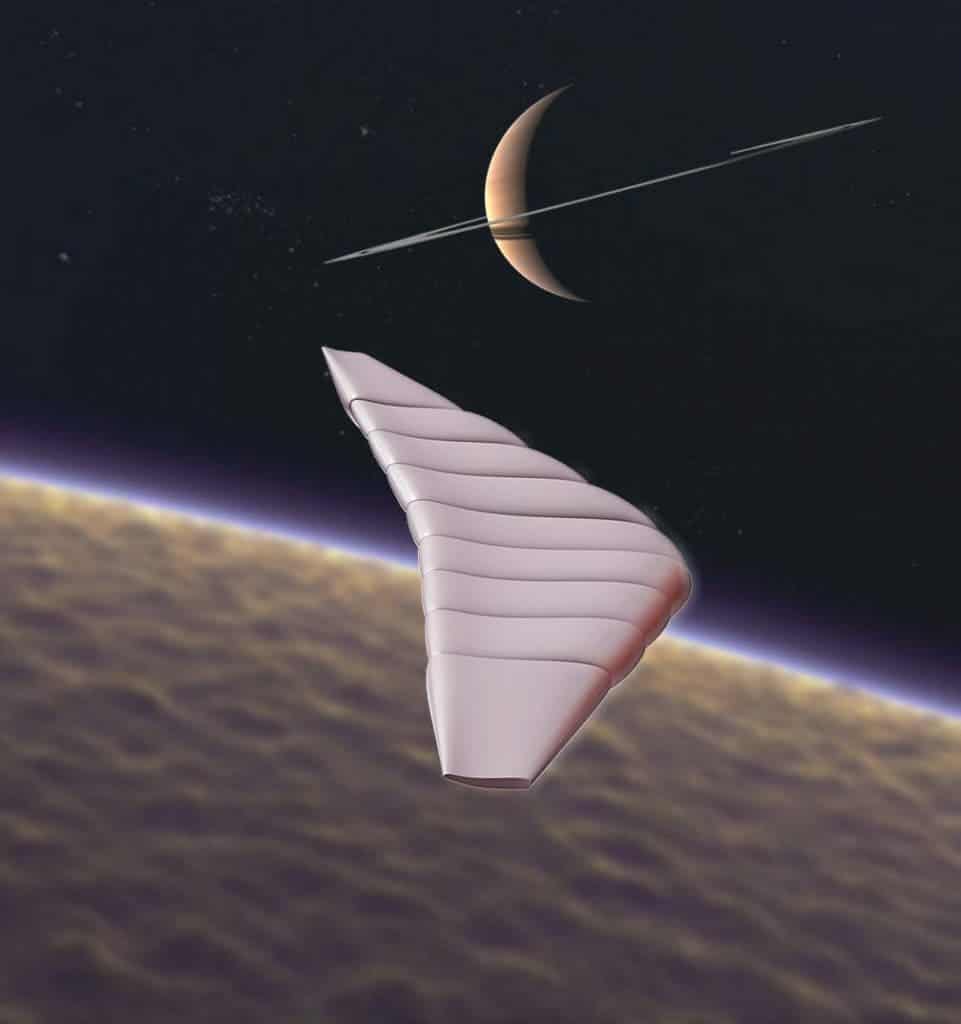In preparation for the Cassini probe’s departure from Saturn, NASA is looking to sent a drone on the giant’s moon Titan. The agency has awarded a Small Business Innovation Research (SBIR) Phase 1 contract for the early-stage development of these vehicles.

Credit: GAC/NGAS
Two private companies, Global Aerospace Corp. and Northrop Grumman Aerospace Systems, have been picked by NASA to design a vehicle which will explore the surface of Saturn largest moon, known as the Titan Winged Aerobot. The agency also requested that they prepare a prototype of the vehicle for testing on Earth. The two companies will share a Phase 1 SBIR contract — NASA said that such contracts last six months and are worth up to US$125,000.
Several design elements will be incorporated into the Titan bot to allow it to function in the moon’s extreme environment, said principal investigator of the Phase I effort Benjamin Goldman in a statement from Global. The drone will need to have excellent lift and maneuverability while being solid enough to withstand Titan’s atmospheric pressure.
“Titan is a cold, harsh environment that poses many technical challenges for any lighter-than-air exploration platform,” he added.
This won’t be the first time a human craft will land on the moon. In 2005, the Cassini mission sent the Huygens probe to Titan’s surface, where it remained operational for several hours, feeding us data on the moon’s atmosphere and surface. However, the new drones are designed to remain mobile, soaring high above the frozen surface. This would still allow them to map Titan in greater detail than Cassini can achieve during its flybys. They would also be invaluable in astrobiology and habitability studies on the moon, Global representative said.
Unlike Huygens’ single landing, a Titan drone could soar above many locations. Because it will fly closer to the surface, it could map Titan in greater detail than the higher-ranging Cassini flybys. This provides potential for studies in astrobiology and habitability, Global representatives said. One novel feature the company plans to install on the Titan Winged Aerobot is a buoyancy system what let it change altitude without the need for propulsion or traditional control surfaces such as flaps. The robot could fly over sites several times and even send targeted probes down to the surface, they added.
Titan is the only moon in the solar system known to have a significant atmosphere and a liquid cycle — though its lakes are made of hydrocarbons, not water. Despite its incredibly low surface temperatures (minus 300 Fahrenheit, or minus 184 Celsius degrees) and lack of water, it has been proposed that the moon could support methane-based life. So there is a lot of excitement for what the drones might find on the moon.
While the glider is being designed for Titan, it can be adapted for use on “any solar system body with an atmosphere,” Global added. Other applications could include returning cargo to Earth from the ISS or surveying Mars from a drone built for its thin atmosphere.


